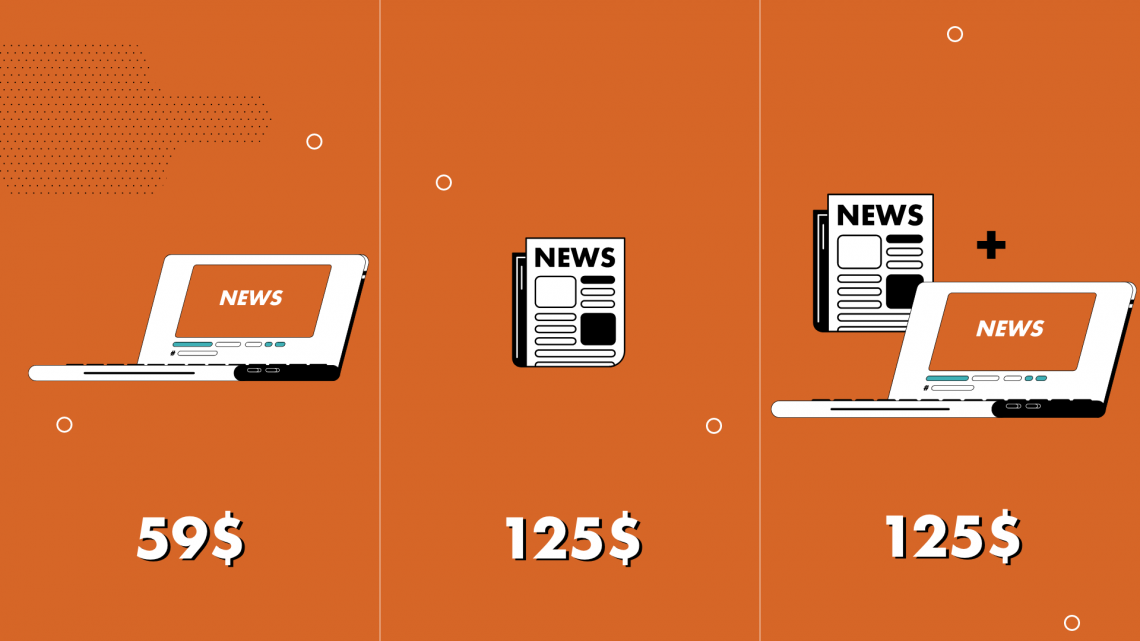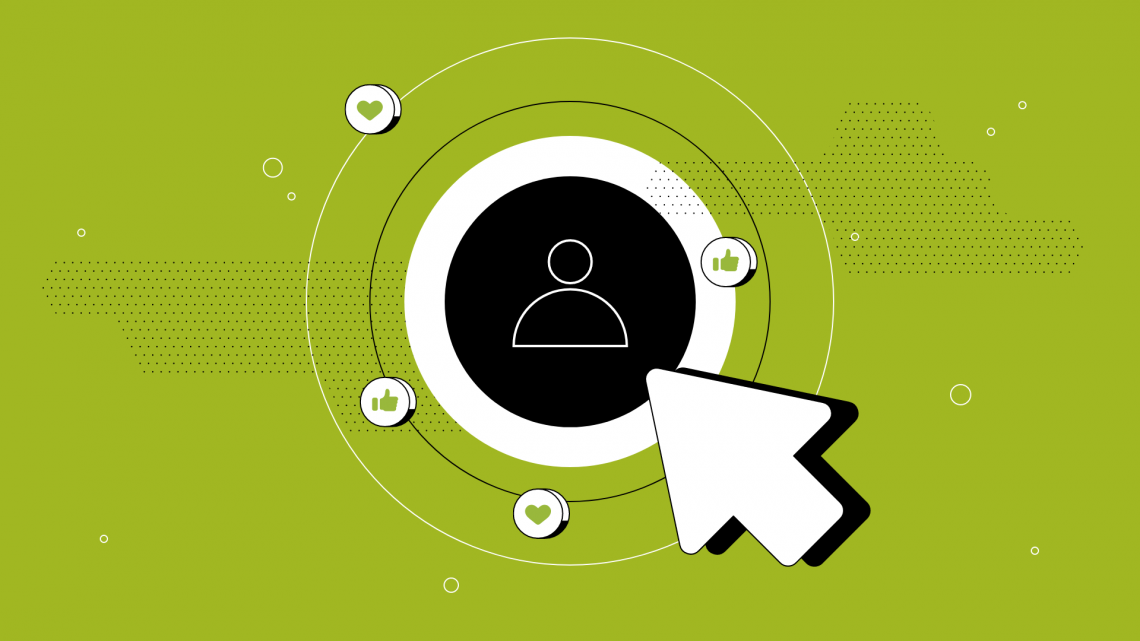This website uses cookies to improve user experience.
Read more: Terms and conditions
Cognitive Distortions: What They Are and Why They Happen
What are some types of cognitive distortions and how do they influence our beliefs and opinions? Learn why it is important to challenge yourself, always verify information and look for alternative points of view.
Common Biases
Have you heard that people only use 10% of their brain and there’s still a lot of brain potential we haven’t unlocked? Do you believe it? If you do, you are more likely to pay attention, remember, and approve of information that confirms this idea although scientists say it’s wrong. This is called confirmation bias: you have certain beliefs and you are motivated to notice, interpret, and favor information that allows you to confirm them.
If you find information that supports your belief that there are untapped brainpower reserves, you are very likely to accept it without really questioning its validity. However, if you see something that contradicts it, you become skeptical and scrutinize it more. This phenomenon is called motivated reasoning.
Both motivated reasoning and confirmation bias lead to overconfidence in one’s views, even if they, in turn, can lead to negative outcomes. For example, despite the wealth of scientific evidence that says vaccines approved in the EU are safe to use, there is a lot of false information out there that says they aren’t. A person who fears needles or simply feels reluctant to spend time at a doctor’s office might see this false information and accept it with more ease than others. It helps them support their preferences.
The idea that something negative has more impact on cognition and behavior than something positive is called negativity bias. Bad news, trauma, or negative emotions tend to lead people to dwell on the information more than for something positive.
For example, if you went on a hike in Saarema and found 10 euros but also missed the ferry you wanted to take to the mainland, you’d be more likely to focus on the ferry than the money. The same happens with news consumption. Humans are prone to remember and pay attention to negative things more. Media companies know this—if you look at headlines, more of them are negative than positive. Similarly, we can easily fall victim to doomscrolling on social media —scrolling even though most stories are sad or anger us, yet we are unable to stop. Social media companies take advantage of this as well – it was revealed that Facebook algorithms were displaying content that got a lot of angry reactions more prominently than content that received a lot of likes.
Another mental shortcut to be aware of is something called familiarity bias, which means that we are more likely to trust or believe something we recognize or have seen or heard before. This is one of the ways advertising works. Familiarity with a particular brand, like Nescafe, for example, increases the likelihood you will reach for a jar of Nescafe next time you run out of coffee. This bias also makes us particularly vulnerable to false information that has been spread widely – we might start thinking that there must be at least some truth to it.
How can we overcome our cognitive biases?
- Being aware of them is the first important step.
- Stay critical and don’t assume something is true just because it would be nice if it was.
- Don’t ignore the news stories that contradict your instincts and suspicions. Examine them and try to verify the facts like always, but don’t ignore them (there will be more advice on how to fact-check in Unit 4).
- Don’t assume what you don’t know – don’t fill in the gaps with your assumptions.
- Be open to changing your mind. It’s never too late to grow and learn.
Further Reading
There are many, many more human biases that influence our decision-making and attitude formation daily. If you would like to understand just how many there are, take a look at this infographic.
If you would like to read more about how scientists came to discover these vulnerabilities we all have, we suggest this article from The Newyorker magazine.
The Impact of Advertising
Have you ever wondered how many ads you see per day? Dozens? Hundreds? Thousands, maybe? In fact, the amount of advertising you consume depends on your lifestyle: where you live, what your commute is like, and how you spend your free time.
According to advertising and marketing specialists from Red Crow Marketing, there is an avalanche of 5,000–11,000 different ads waiting for us every day – print ads, brand labels, and ads online. If you want to calculate precisely, you can repeat Ron Marshall’s crazy experiment. The marketing specialist decided to list all the ads he encountered during the day. He counted 487 ads just while having breakfast. Shocked and surprised, he decided not to continue.
All of this is created to make us buy: buy goods, buy ideas, buy lifestyles.
So how does it work?
Advertising is closely tied to pop culture and media. Advertising and marketing experts carefully track society’s current interests and gain insights into trends and necessities in order to leverage people’s needs or experiences to sell a product.
Marketers and advertisers also often look for ways to anticipate our behavior and use our cognitive biases to their advantage. In the book Predictably Irrational, the author and behavioral economist Dan Ariely described the way this can work.
One day, surfing the internet, Ariely stumbled upon an offer from the Economist magazine. They proposed three subscription tiers:

Which of these would you choose?
If you are an Economist reader, your gut instinct should kick in: “What are you waiting for? That’s an excellent offer! Sign up for a combo subscription right now!”
A professional marketer will immediately notice the trick here: the combo subscription is designed to divert the prospective customers’ attention from the digital plan in favor of the more expensive print subscription. They offer largely the same content, but the advantage of a print subscription over the digital one is unclear to us. Meanwhile, we do know that a combo subscription (print + digital for $125) is a better value than the print plan alone for $125. And we love getting the best deal!
Ariely devised an experiment to test this theory. He picked 100 students and asked them which subscription they would choose: 16 students insisted on the digital plan for $59, and the remaining 84 favored the $125 combo subscription. None of them even considered buying the print-only one!
Surprising results came a bit later when Ariely picked another 100 students, leaving only 2 plans to choose from:
How do you think the students voted? It would seem they would vote the same way as the first case because Ariely just removed the plan no one previously chose! Only 32 people went for a combo subscription, while 68 chose the digital one.
What affected their decision?
In the first case, the students were persuaded to choose a combo subscription. It’s how our brains are wired: the perceived value of the product always depends on the options available. We can’t help comparing the options at hand. Moreover, the students’ choices were easily predictable. Ariely believes the core of it is predictable irrationality — one of the foundations of behavioral economics.
We are living in a time when we don’t even need to leave our couches to encounter advertisements. It is impossible to totally protect ourselves from its influence, but, with awareness and critical thinking, we can be better equipped to navigate the advertising world in a smart way.
Targeted Advertising
Young people online are unlikely to see ads on hair loss or back pain even though they are relevant to a lot of people in our society and might get advertised on TV frequently. Why is this? Most ads online are targeted. Social media and our other activities online are easy to monitor. It has made it possible for advertisers to get pretty detailed information on our likes, personalities, and behaviors.

On the surface, this might sound like a reasonable use of your data. If you are a student in Estonia, seeing an ad for retirement services in Japan might not be of interest to you, which is why businesses choose to target ads as specifically as they can.
However, there is also a dark side. To be hit with targeted advertising, you don’t necessarily have to be engaging in certain activities, but your friends might. For example, if you and a friend meet up and your friend has been thinking about joining a gym, you might see ads for gym memberships later. Why? Because Facebook sees that the two of you were in the same location and are friends. If one of you is interested in something, the other might be as well. Do you find that intrusive?
Where targeted advertising becomes not only intrusive but also potentially dangerous is when private information such as sexual orientation and health issues is collected and sold to advertisers. This data, while sometimes collected anonymously, can often be easily attributed back to you.
Your likes on Facebook can even paint a picture of how neurotic, open to new experiences, and agreeable you are. You might have heard of a scandal about Facebook and a company called Cambridge Analytica that broke in 2018. It was caused because this information was gathered with the help of a third-party app – a personality test. Some people were paid to take the test, but the app pulled data from the accounts of their friends as well. Data from over 87 million people was obtained by Cambridge Analytica.
Then it was used for political advertising. For example, a person who is deemed neurotic would get certain types of ads that were expected to work on them better and influence their choices in elections. This caused an outrage, and Facebook banned tens of thousands of third-party apps that Facebook saw as sharing data inappropriately, publishing data, or not sharing information on how the data is used. Although more scrutiny is now applied to these practices, some social media sites and, in turn, advertisers still might know us more intimately than we would like.
This type of surveillance leaves users vulnerable not just to advertisers but to online manipulation as well. However, the European Union is working to limit pervasive tracking and profiling users for ads. Minors are going to be especially protected.
One way to try to deal with this is reviewing the privacy settings on your social media, as advised previously. Another is to become much more careful of what you share and where this information might end up.








